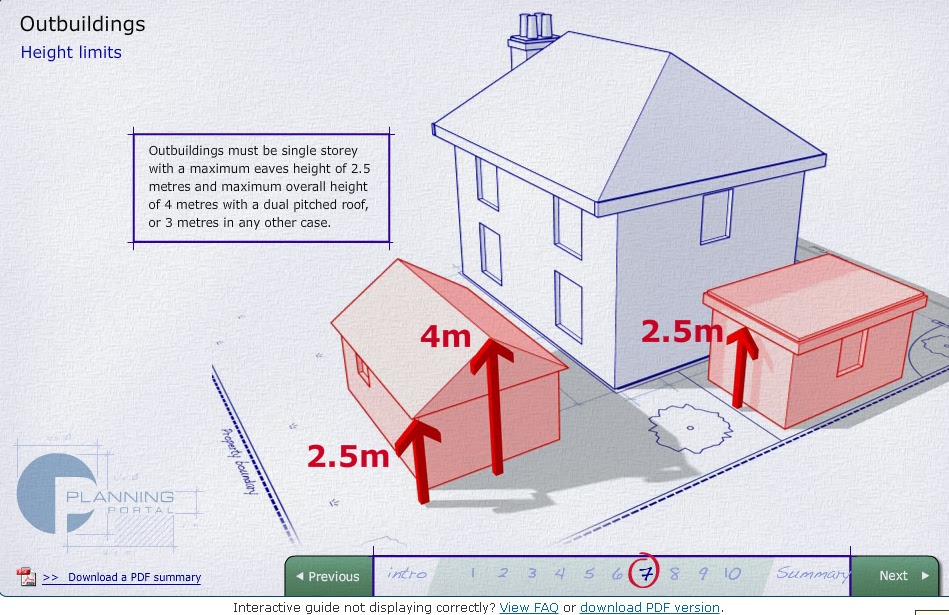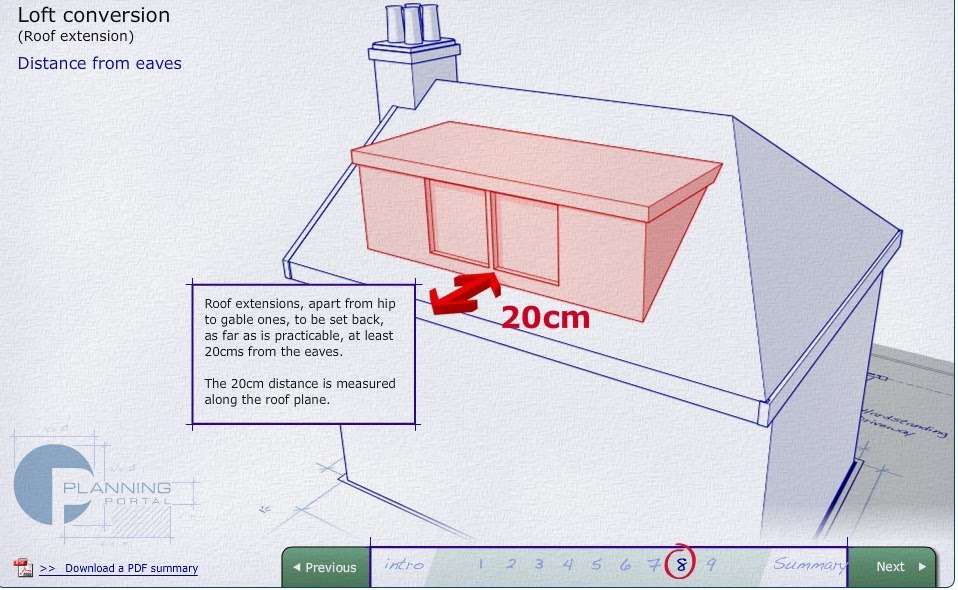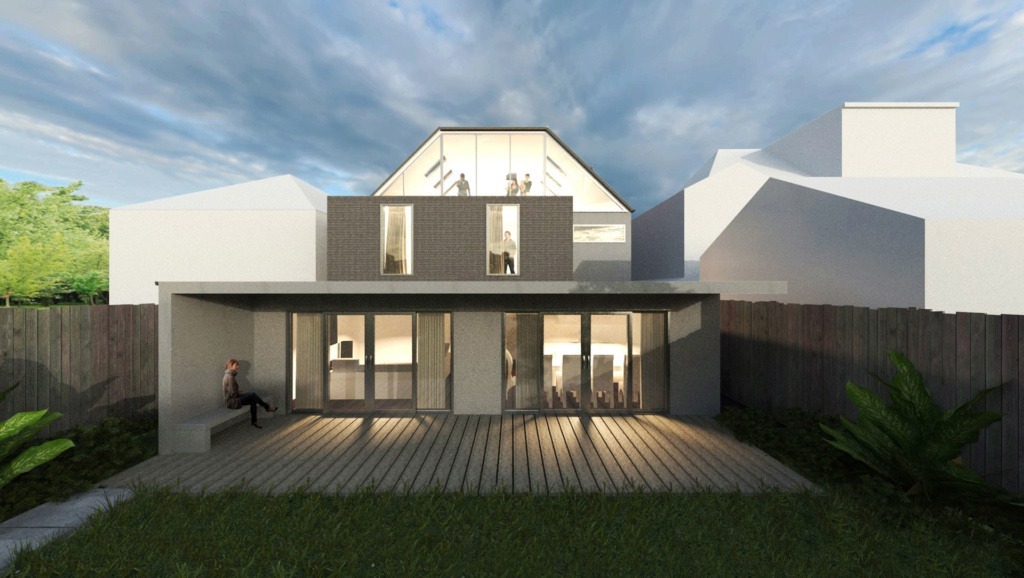Frequently Asked Questions

Planning Application FAQs

Our Services FAQs

Our Process FAQs

Building Regulations FAQs

Interior Design FAQs

Change of use FAQs
- Use Class A1
PLANNING PERMISSION FOR PERMITTED DEVELOPMENT AFTER MAY 2019
In more recent years, the more relaxed Permitted Development Rights enacted since 2015, have allowed families to have up to 75% more extension space without Full Planning permission, allowing twice the usual space allowed for single-storey rear extensions. However, in May 2019, these freedoms are set to expire with no clear statement from the Government or councils on its continuance on the platform of a severe housing crisis where homeowners are clambering to ensure the optimisation of their home.
As planning specialist we have had an array of projects maximising their space under Permitted Development rights and are able to make the journey for clients wishing to harness their rights a more relaxed and pleasant experience, complementing design creativity and flair with an in depth understanding of policies. Do not hesitate to contact us with projects or queries. Let’s make that New Year’s resolution to maximise the value and quality of your home come true. The time is now.
New permitted development rules on two storey extensions
PD Rules on Two Storey Extensions
As of October 2019, new rules are being phased in which will allow homeowners to build extensions onto detached homes without requiring planning permission, under the usual rules of permitted development. This will make adding a two-storey extension to your home no more complicated than having a loft conversion.
This doesn’t mean that there is no paperwork involved in undertaking a two-storey extension, but it will make obtaining permission for the extension much simpler. Applications for lawful development will need to be submitted to the council, but the requirements are much less strict and sometimes only a letter and a sketch will be enough evidence needed to gain permission.
Homeowners will still need to comply with building regulations when developing their extension, but neighbours will have no routes to formally object since the extension will be covered by permitted development rules. These new rules are thought by the government to be beneficial in encouraging families to extend their existing homes rather than moving when more space is needed, as well as encouraging developers to add new homes to existing blocks of flats.
To begin with, the new rules are being rolled out to purpose-built blocks of flats, but it is intended that the rules will be rolled out to all detached properties over time, making this a crucial aspect of permitted development rights for families and homeowners living in the UK. While some critics have voiced concerns that this change in law will lead to unsightly developments, it will support families who would like to undertake a two-storey extension without enduring the cost and bureaucracy of obtaining planning permission.
Developers and small businesses will also appreciate the changes, which will simplify and hasten the process of extending small commercial premises and converting disused commercial premises into new homes. Developers will not have to get detailed planning permission to demolish disused properties under a ‘permission in principle’ system, which will go some way to reducing ‘dead time’ at the start of development.
Outlines for this change were originally set out by Sajid Javid over 18 months ago, with the initial plans being that two-storey extensions would still require light touch planning permission. The rules have since been fleshed out by Housing Secretary Robert Jenrick into a reform which completely eliminates the need for planning permission for two-storey extensions.
UNDERSTANDING YOUR PD RIGHTS
With us you can easily learn which PD rules affect you. We give free consultations, planning advice and quotations. If you are thinking of doing an extension or a loft conversion, call us and we can study your proposal free of charge to ascertain whether your Planning Authority Department policies will require a full planning application, or if it can be done under Permitted Development Guidelines.
How we can help you
We can help you by preparing submitting your application to make the process a lot easier for you, and to give you the best chances of approval. Call us on 0203 409 4215 or email us your details for a call back.
Request a free quoteLarger home extension scheme after May 2019
Larger home extension scheme
Also, there could be additional changes and restrictions to observe again for commercial
(and possibly residential applications). The reason for this confidence is that the trends of our rising
population vs our housing stock issues have continued unchecked, especially in the capital. However,
there is also the continued shortage of new sites and plots in congested areas, so it is not advisable
to wait. Planning applications take the best part of 3 months to the process, so do take advantage of
these guidelines while you can. You should be able to extend your home twice the previous maximum of
3-4m (terraced/end terrace/detached).
What can be done under Permitted Development?
The amount of work you can do with your PD Rights varies according to several considerations such as location and how much other development has taken place on the site since1948, even if it was done by a previous owner.
- Single storey extensions or ear extensions
- Loft conversions
- Front porches
- Double storey extensions
- Outbuildings
- Solar panels
- Skylights or dormer windows
- New windows or doors
For conditions and more information, see Detailed Guide below.
GPDO & recent changes in 2019
2019 Changes To Planning Restrictions
Urban planning restrictions are not new; King Henry’s Mound in Richmond Park has a clear view to St Paul’s which for which the king created an edict – or protected view in the year 1710. Conservationists in 2016 objected however, that a tower construction beyond St Pauls in Stratford nevertheless spoiled the view (by photobombing the background.) Unfortunately – to date – the build has not been halted.)
In 1948, an Act of Parliament became effective which included the introduction of Permitted Development and Planning Permission. The Act was central to the future of Town and Country Planning, with the advent of listing buildings of special interest.
It reduced the number of planning authorities from 1,400 to 145 and gave them a lot of control, whilst expecting them to prepare development policies autonomously, according to the particular character of their respective region of governance.
Permitted Development (PD) Rights state that you can extend your property to a certain degree, without the need for full permission, as long as you follow the relevant PD Rules. These Rights were reviewed in 2008, when certain conventional rules were replaced with more complex regulations regarding extensions and outbuildings.
Later in 2012, the rules were relaxed for a time to encourage the development of existing properties. An Order was created* in 2015 with some amendments to PD which was to be reviewed in May 2016. At that time it was then decided to further extend the new rules until 30 May 2019. Also at that time, minor changes were made to PD rules for commercial applications such as offices.
[The town and country planning (general permitted development) (England) order 2015]
[Permitted Development technical guidance 2016; general permitted development order 2016; town and country planning (general permitted development) (England) order 2016]
Under the more relaxed PD Rights, some families have enjoyed up to 75% extra extension space without needing any Planning Permission. They have been able to add twice the usual space allowed for single-storey rear extensions. (This is probably because of the pressure of an increasing population on our limited housing stock, making it easier for families to extend into their loft spaces or their back land.)
The clock is ticking, because on 30 May 2019 the Government’s relaxed view about PD Rules will again be reviewed (and possibly revised). There is an argument to say the more ambient rules regarding domestic extensions may likely continue after May 2019, but there is no guarantee.
WILL PERMITTED DEVELOPMENT BE EXTENDED BEYOND 2019?
Is PD Going To Be Extended?

Guidelines
See below for a detailed guide to Permitted Development Rules for single and double storey rear extensions, side and roof extensions, loft conversions, porches and outbuildings. You can use it to check if your project proposal can be done within Permitted Development (PD) Rights – or if it will require a full Planning Application.
SINGLE STOREY EXTENSIONS & PERMITTED DEVELOPMENT
PERMITTED DEVELOPMENT

For more information visit single storey extension case studies
If your extension doesn’t need full planning permission, then it is a Permitted Development, as long as certain constraints are observed:
- Cladding of the outside of a home, using: stone, pebble, render, timber, tiles or plastic is not a PD on designated land (areas of outstanding natural beauty).
- Extensions should not exceed 50% of the land around the existing property. Remember to include sheds etc in your calculation of this limit.
- If the planned extension protrudes beyond the front or side elevation and facing a road, then it will not be a PD.
- Side extensions are not permitted on designated land.
- Materials used in exterior work are to be similar in appearance to those of the exterior of the existing house. (This does not apply if the extension is a conservatory.)
- A side extension must not be wider than half the house width.
- Your side extensions can be one storey, up to 3m high.
- PD Rules allow a maximum eaves height of three metres if the extension is close to the plot boundary (within 2m).
- Your single-storey rear extension can extend back from the existing property by up to 3m, for a terraced house – or by up to 4m for a detached house. If it is not designated land or a site of Special Scientific Interest, you can go up to 6m or 8m metres for terraced, semi-detached and detached houses respectively (until 30th May, 2019.) However the neighbour consultation scheme does apply to these applications.
- PD Rules allow a maximum height of 4m for single storey rear extensions.
- The ridge and eaves height for an extension cannot be higher than the original property.
DOUBLE STOREY EXTENSIONS & PD RIGHTS
For more information visit double storey extension case studies
- Extensions above one storey will not be permitted on designated land.
- They cannot extend beyond the back line of the original building more than 3m. The maximum height of the eaves in an extension is 3m within 2m of the boundary of 3m
- They should not exceed 50% of the land around the existing property. Remember to include sheds etc in your calculation of this limit.
- The ridge and eaves height for an extension cannot be higher than the original property. PD Rules allow a maximum eaves height of 3m if the extension is close to the plot boundary (within 2m).
- It must it come within 7m of the boundary facing the rear of the house.
- PD Rules state that the roof pitch must match the roof pitch on the existing property, as far as is practically feasible.
- Materials for the development’s exterior should be similar to those used on the original property.
- Obscure-glaze your upper wall window or sky light on your side elevation. It must also not open unless it is at least 1.7m from the floor of its respective room (these points are to avoid overlooking).
- PD Rules do not allow balconies or verandas.
LOFT CONVERSIONS – PERMITTED DEVELOPMENT

For more information visit loft conversion case studies
Your loft conversion is considered a Permitted Development and does not require planning permission, as long as a few rules are observed.
- On designated land, loft conversions will not be a Permitted Development
- To be a Permitted Development any additional roof space created must not exceed these volume allowances:
- 40m3 on terraced or semi-detached houses
- 50m3 on detached houses
- Permitted Developments do not include extending proud of the existing roof slope plane on the front elevation if it faces a road.
- Use materials which appear similar to the existing property.
- Your extension cannot be higher than the highest point on the existing roof.
- Permitted Developments do not include balconies, verandas or raised platforms.
- A side window should be obscured and not able to be opened, unless the opening mechanism is situated at least 1.7m above its respective room floor.
- Roof extensions should be set back, as far as reasonably feasible by at least 20cm from the eaves, unless it is a hip or gable roof (measure the 20cm along the plane of the roof). The roof extension should not hang over the wall of the house.
- Your roof or loft project might have an impact on any existing bats. For this kind of work you will need a survey and possibly a licence to proceed.
Porches
- When you measure the area (on the ground) of your porch externally, it should not be above 3m2
- Your porch height should not be above 3m.
- Your porch cannot come within 2m of the boundary, if it faces a road.
OUTBUILDINGS, 6 METER EXTENSION LAW & DEADLINES
6 Meter Extension Laws & Ddeadlines
- If the property is on designated land, an outbuilding at the side will not a Permitted Development.
- If it is a listed building, an outbuilding will not be permitted.
- If the property is in a national park, the Broads, or Areas of Outstanding natural Beauty and World Heritage Sites, the area of an outbuilding above 20m from any of the house walls should not be above 10m2, in order to be a Permitted Development.
- Outbuildings beyond the front elevation of the house are not allowed.
- They should not take up more than 50% of the area of land around the original house. Remember to include all sheds, existing outbuildings & existing extensions to the original house in the calculation regarding a new outbuilding.
- A new outbuilding should not be residential, self-contained living accommodation. A microwave antenna is not permitted.
- Your new outbuildings should be single storey only, to a maximum (eaves) height of 2.5m. Overall the total height should not exceed 4m – on dual pitched roofs – and 3m on other roof-types.
- If your new outbuilding comes within 2m of the boundary, then the whole building should not be higher than 2.5m.
- PD Rules do not allow balconies. You can have a raised platform such as decking, but make sure it is not built above 30cm.
- If you have a container with oil to heat your home, it should be smaller than 3,500 litres capacity volume, to come under Permitted Development. Please note all the other PD conditions above apply to containers too.
Definitions
- Designated Land covers Areas of Outstanding Natural Beauty, national parks, B roads, Conservation Areas and World Heritage Sites.
- Original House refers to how the house stood as at 1 July 1948 (unless it was built after that date, in which case it would refer to its new, unaltered condition. Someone else may have extended your property before you, in which case, the extension beyond the original back or side line of the site will be figured as part of the remaining cubic volume permissible for you to further extend.
Further information
Do note that local authorities do have powers which can remove PD Rights, especially in conservation areas. [Planning permission might not be required due to your Permitted Development Rights, however you can still obtain a Certificate of Lawful Development to show buyers for example that your proposal did not require permission, has permission, or that your use of the building is legal. (If in doubt, you can call us to discuss the details of your property.)] The NPPF (National Planning Policy Framework) shows the guidelines for PD.
In the last few months, we have had new clients approach us, who have previously had applications rejected in some London boroughs due to the permitted development deadline. As this deadline has now been permanently extended, we are now able to re-apply for these projects with no issues. Please get in touch as we can get the best results for Permitted Developments. We can also help you undertake structural calculations and drawings, Building Regulation drawings to comply with Building Control, prepare tender packages or assist with party wall surveys.
Use Class A1
Which uses does Class A1 cover?
One of the most common use classes is A1 use which is for shops and general retail. However, A1 use class does also cover Post offices, sandwich bars, hairdressing salons, travel agents, ticket agents, funeral directors, drycleaners & alterations, and hire shops.
Have a look at the list of uses on the Planning Portal
for more details.
Some of the A1 planning applications which Extension Architecture has done have been for refurbishments and new shop fronts to existing A1 shops. Others have been from A3 use (restaurants) to A1 retail use, and vice versa. At Extension Architecture, we have done many change of use applications from one of the various classes to another.
Here is an example of one of our A1 Use Class applications.
Follow the link in the text above or click the picture for more information about this project.
Do I need planning permission for my proposal?
Do I need planning permission for my proposal?
There are a number of factors to consider to determine whether your proposal requires planning permission. However, developments will require the consent of the local council in which case you will need Planning Permission or a certificate of lawfulness.
Some examples where planning permission is required:
- New Developments
- Additions or extensions to a flat or other dwellings. Including flat conversions.
- Separating your house to be used as separate room’s e.g studio flats, self-contained flats, bedsit or HMO. Even using a caravan on the property, however, in the case of lodger’s planning permission is not needed.
- Separating or dividing the existing dwelling for business or commercial use eg. For a workshop or parking space for commercial use at your home.
- Any proposals which is not line with the original planning permission for the house eg. Your house may have been built with a provision to stop people placing fencing in front gardens for aesthetic purposes.
- Any work which can interfere with the view of road users. (usually from the streetscape)
- Any work which would involve amendments to a trunk or classified road.
Some areas where planning permissions would not be required are; any work internally, layouts and furnishings and fixtures, telephone connections, Alarm boxes with exceptions to building within a conservation area, listed building or a building of heritage significance/importance. In a nutshell, if it involves work that has any influence on the external look of your property, the chances are that you would need some kind of planning permission.
we will be happy to guide you in letting you know which planning application you should go for.
Retrospective Planning Permission FAQs
Some people build first then apply later; others are unaware that they needed planning permission until the officer knocks at their door. We can help you apply for retrospective permissions where needed.
About Permitted Development FAQs
What Permitted Development Will I Need?
Because of the shortage of housing stock, planning departments have relaxed their rules regarding simple developments. We can tell you if your build will be a permitted development or needs full permission.
Use Classes FAQs
The various use classes for buildings, and changing to another proposed use class.
The Planning Application Process, and a Case Study
The Planning Application Process FAQs
There are various routes and options which your planning application could take. In brief, an application is submitted; then validated, declared invalid (missing documents) or an inappropriate application type; then approved, approved subject to amendments, or refused.
- I’m demolishing my house, do I need Planning permission?
- I’m building an outbuilding or annex or Shed, do I need Planning permission?
- I want to excavate/dig to create a basement level, do I need Planning permission?
- My house is in a conservation Area, What are the differences to a normal planning application?
- My house is a listed building, What are the differences to a normal planning application?
- I want to put in an application for a roof terrace, what are my chances of getting approval?

Steph Fanizza, Architectural Design & Team Manager
Tell us about your plan and we'll send you a free quote! It takes less than 60
seconds!

Steph Fanizza, Architectural Design & Team Manager




